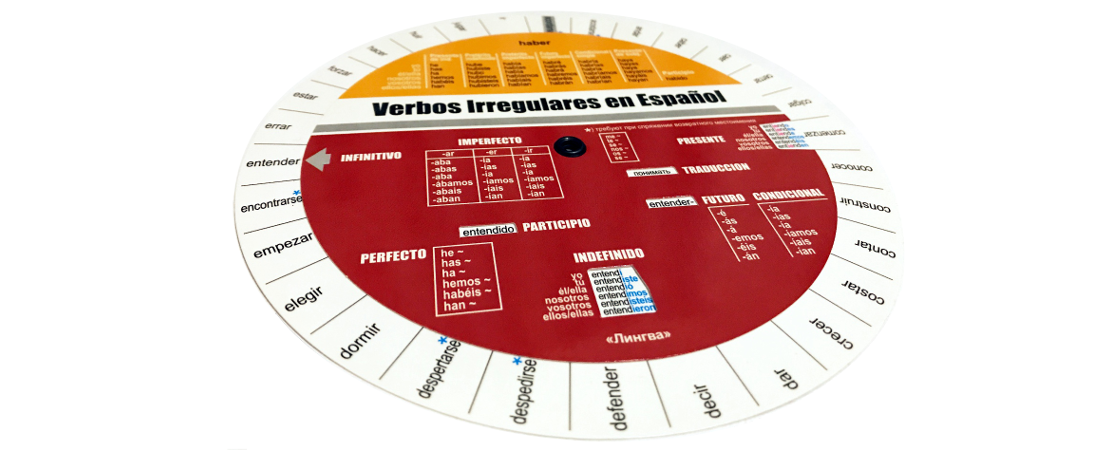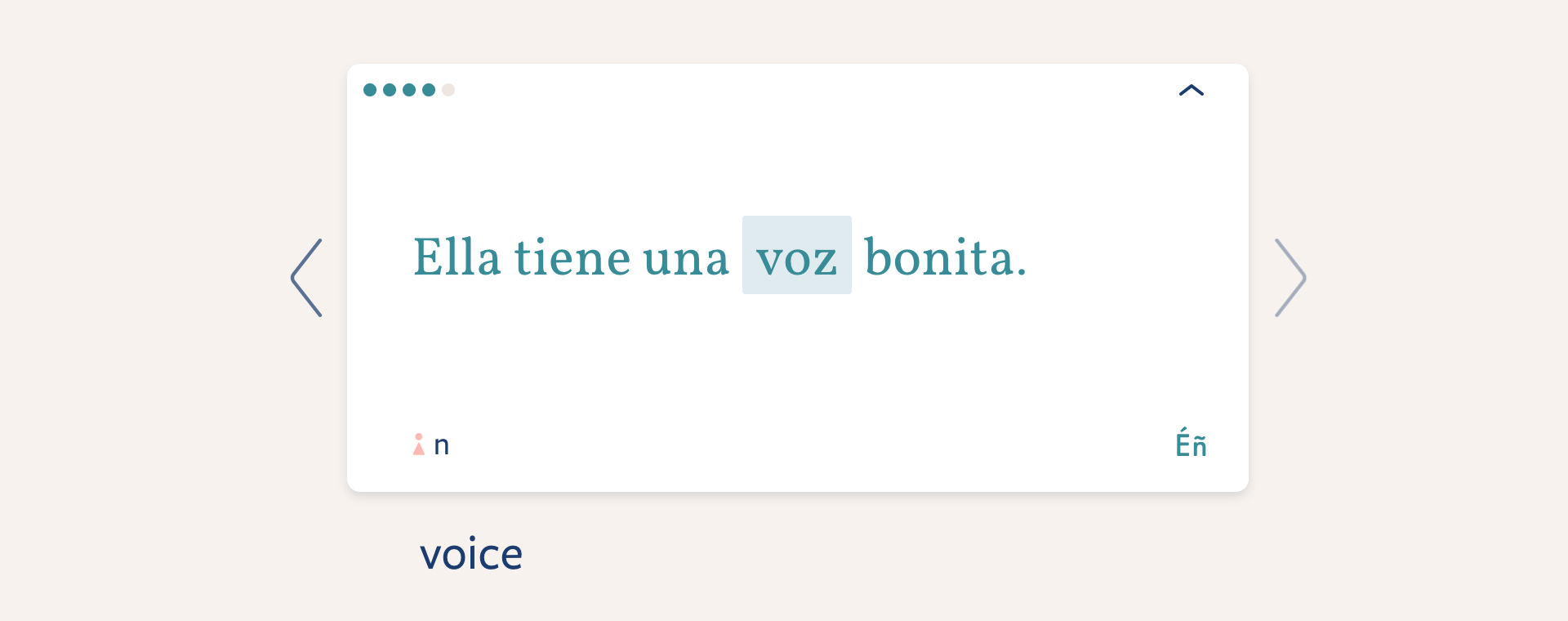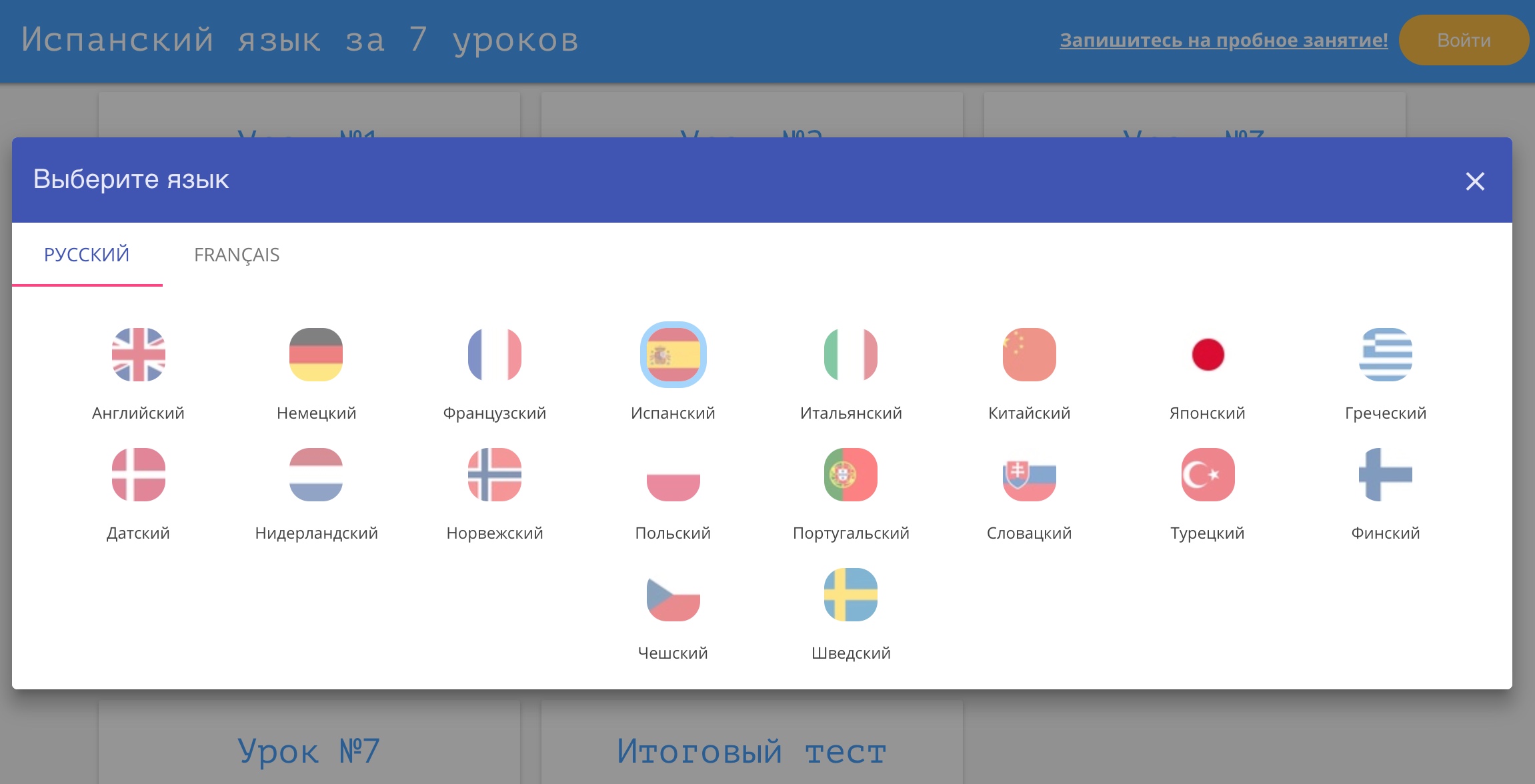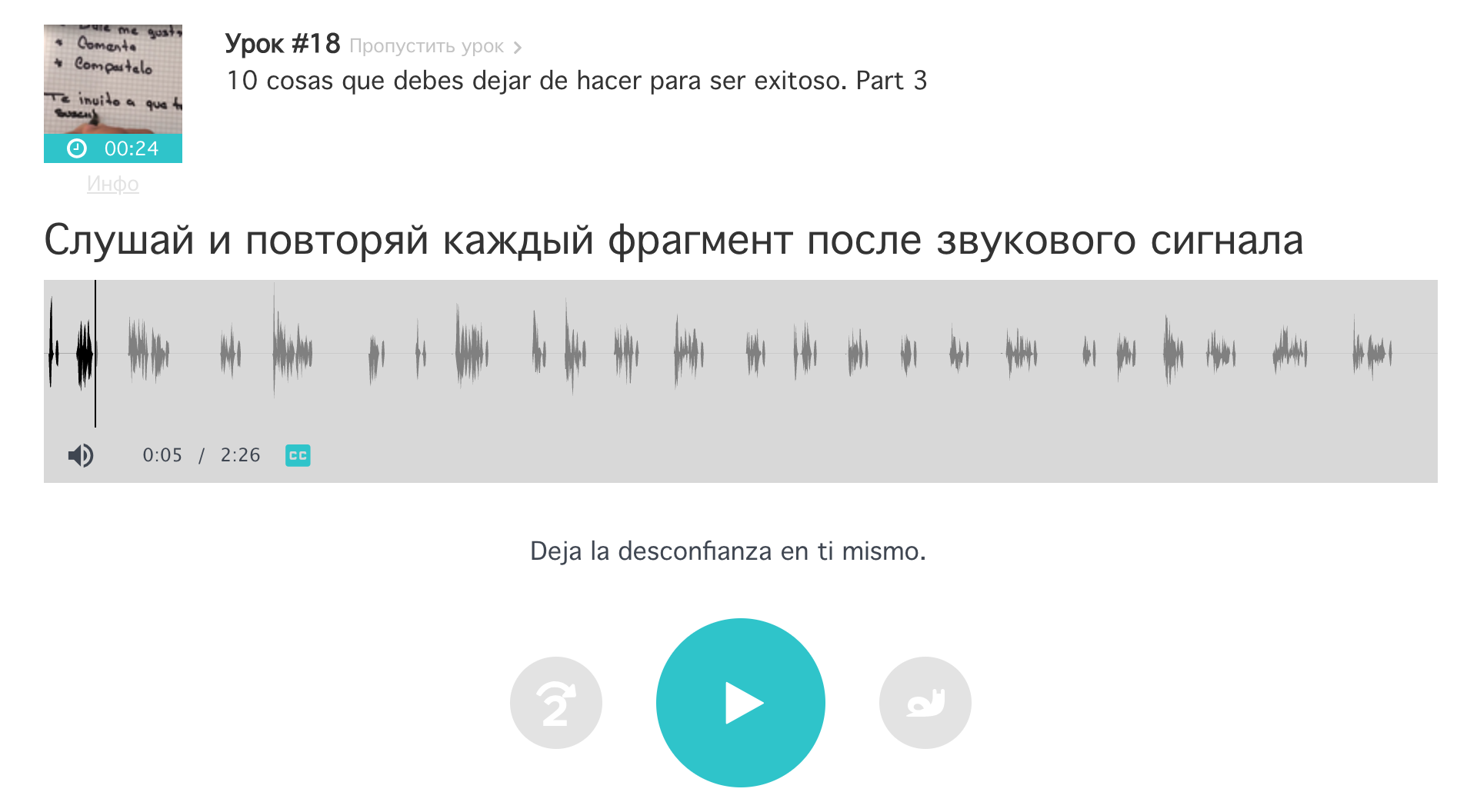Note: The article is generally relevant to any European language, including English.
Last February, a desire to learn Spanish flooded me. Well, as if the interest was before, I like Latin music and the language itself. But that time was not enough, he was busy with something else ... In short, the time was finally found and I decided that I should use it to the maximum to learn from the zero level to at least understand the songs by ear and speak more or less.

I dismissed the courses immediately, because In principle, I do not believe in such a learning model. She creates a pleasant illusion that you are taught, and you only need to come to class 2 times a week and sometimes do not forget to do homework. This kind of shifting of responsibility. We did all this in school, even in a more intensive format. But I didn’t want to stretch this thing for many years to get a dubious result ...
Therefore, I decided to follow the same path that I learned programming many years ago - to educate myself. However, natural languages are not quite the same thing as programming languages. Therefore, I had to get acquainted with the variety of existing methods and choose the best ones.
First attempts
I decided to start by viewing the recordings of the "Polyglot" program for Spanish from the Kultura TV channel, lessons on Duolingo , in the Lingvist application and a review of the grammar of the books "Uncomfortable Spanish grammar" and "Everything about the Spanish verb . " For these materials, I worked the first 1.5 months.
Regarding the project "Polyglot" I can say that there is a benefit, but there is a lot of water. And keep in mind that the topics of discussion are mainly theatrical, since most of the participants in the program are actors. The result is that the useful material that could be put in 1.5-2 hours stretched to 16 hours.

Lingvist is gorgeous! Despite the fact that there were no Russian / Spanish pairs there and I had to study English / Spanish pairs, this is the only application I have seen where words can be learned immediately in context, if you wish, looking at grammatical comments on a specific phrase. And at the same time and hear the voice of each phrase.
Duolingo disappointed me the most about what I tried last year. In fact, this is the usual timekiller, masquerading as a training service. The only advantage that can be found in it is that it teaches us to give the language at least 10-15 minutes daily. On the other hand, if you do not have the motivation to learn a foreign language, it still does not help, and Lingvist is still better.
A grammar review was a very good idea. It is much easier to perceive language when you already have a more or less complete vision of its structures. I conducted a synopsis of the books, without doing any exercises and not digging into specific topics. At this stage, the goal was not to master the grammar, but only to become familiar with what is in the language.
Streamlining
At the end of the 6th week of learning Spanish, I came across an advertisement for the Ichebnik project and decided to fit into the 6-week intensive level A1. The project is very interesting and allows you to structure the existing knowledge. But there is only Spanish, so for other languages you will have to look for something else. Although this is an optional step. Determine exactly where you have the gaps in the grammar easier with the help of tests, of which on the Internet in bulk. And after making a list of topics for mastering, you can find video lessons on them, including from native speakers. In parallel with the intensiveness on Ichebnik, I also got acquainted with the SpeakASAP project, and also bought a table-turntable for memorizing irregular verbs - a mega-convenient thing!

SpeakASAP is a very interesting project that provides free grammar courses of 7 lessons for beginners. The choice of languages they have is very extensive (see screen). In this case, everything is clear, in the case and no water. A great option to start learning a new language.
Rollback
After 3 months of learning Spanish, I got tired, I had an intense pace, taken from the very beginning. I didn’t want to study all June, so I had to take a break. It should be understood that the study of any foreign language is not a sprint, but a marathon. And the most important factor is to include language in your daily life. Therefore, do not repeat my mistakes, it is better to work for 30-60 minutes every day for a year than for 3 hours / day for 3 months.
Alternative Techniques
Fortunately, in August I planned a trip to Spain, so in July I decided to do some work in Spanish. And I even started studying at Busuu, but then I got to know Michel Thomas’s method . The method is interesting because it involves learning without straining - no need to write anything down or try to memorize something consciously.
The bottom line is that for the 16-hour course selected special phrases from simple to complex, each of which demonstrates a specific grammatical structure of the language. Michel enters the phrase first, and then gives the words that the listener must substitute into the phrase, after which the correct version of the phrase is given. Words and grammatical forms are repeated throughout the course for better memorization. This is how the subconscious mastering of grammar and mastering of the basic structures of the language takes place.
The only negative is that the original Thomas courses are written for native English speakers, i.e. Knowing English, you can quickly learn many languages in this way. But for mastering the English original course is not, however, there are adaptations of this method, such as EnglishSimple , but I did not use them and I can not vouch for the quality. Plus, there is the Pimsler system , which is generally based on similar ideas.
In general, the Thomas method suited me very well and allowed me to start speaking Spanish without really thinking about grammar, which helped a lot in Spain. However, it was difficult for me to understand the speech of the Spaniards by ear, because they say very quickly. It became clear that simple phrases at a slow pace are good, but not enough for a normal conversational level.
I began to look for services in which one could develop listening skills and train a good pace of speech. And, to my surprise, I found only 1 service: Mimic Method .
The service has 2 types of courses on the sounds of the language and songs. In principle, aside from the overpriced price and the use of self-made notation for some sounds instead of IPA, everything seems to be fine. And certainly the study of language is very useful to begin precisely with an acquaintance with its sounds.
However, there is one big “But”, in the songs, the sound extraction is different from the usual speech, and the rhythms there are chosen to rhyme, rather than those that are more often spoken in everyday life. Therefore, I wanted to study by recordings from Youtube, where ordinary native speakers tell something interesting. At first, I tried to just press a pause and try to repeat, but I quickly got tired of it: first, it is rather difficult to align the moment where to press the pause, and, second, there is no feedback, no way to evaluate how similar I repeated. I tried using Audacity to insert pauses into the track itself and be able to record myself. However, manual placement of pauses was difficult and dreary. Then I remembered that I’m a programmer :-)
Automation and new service
In general, I decided to automate the preparation of audio recordings, and a week later I already had a good pausing algorithm and the opportunity to feed him any mp3 file. A little later, I told friends about this utility and we decided why not to make a service based on this for the common good. This is how Speekify was born. In addition to the pause arrangement, we also made an automatic assessment of the degree of similarity on the basis of comparing audio signals and recognized text, a handy player and many small things that simplify classes.
I checked the technique on myself, and I can say that it really works. For verification, I called up the whole of May with Spanish speakers from different countries through iTalki and tried to communicate with them. And even though the first couple of calls I was a little worried, everything turned out great! I could not only calmly take them to the ear, but also myself talk about something on topics that are interesting to me. In June, I started watching movies in Spanish, and even here I was surprised that I calmly understand them without subtitles.

This is how we created the missing “brick” in the method of mastering a foreign language without a teacher.
What's next?
At the moment, I still do not have enough vocabulary in Spanish when compared with the same English ... In general, this is a small problem, because you can formulate your thought more simply, and the thoughts of others are clear from the context almost always with the current vocabulary. But by itself, it is necessary to type the vocabulary, but for this you do not need to cram words, after you have mastered the first 3000 words, it is enough to watch movies, TV shows, listen to songs, communicate with the speakers. That's what I'm going to do.
Besides English and Spanish, I am still interested in French. Therefore, I plan to summarize my experience with Spanish into a turn-based strategy and use it to learn French from scratch.
Part 2: Turn-based Strategy